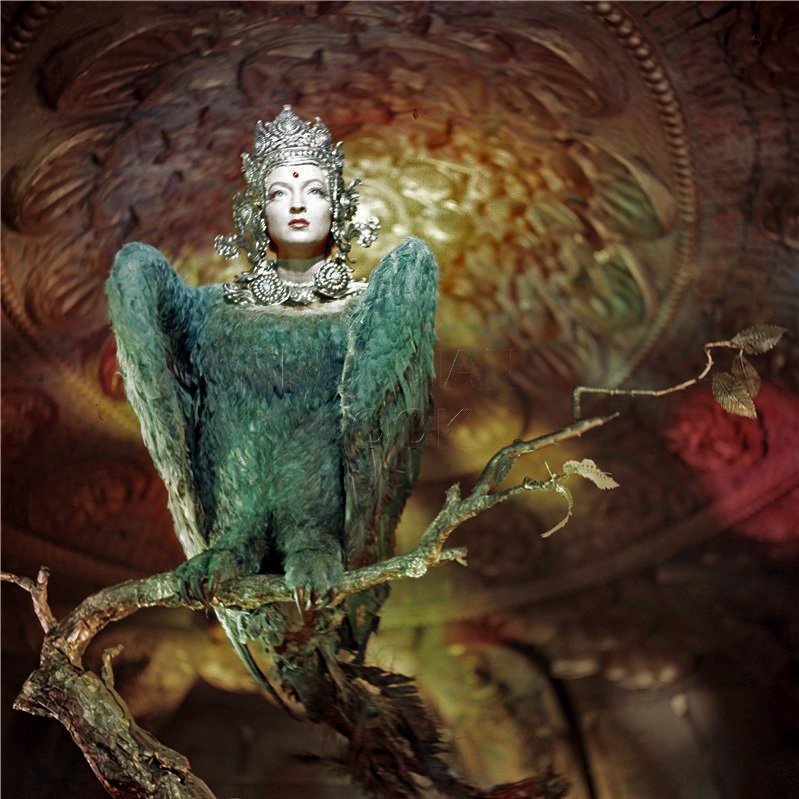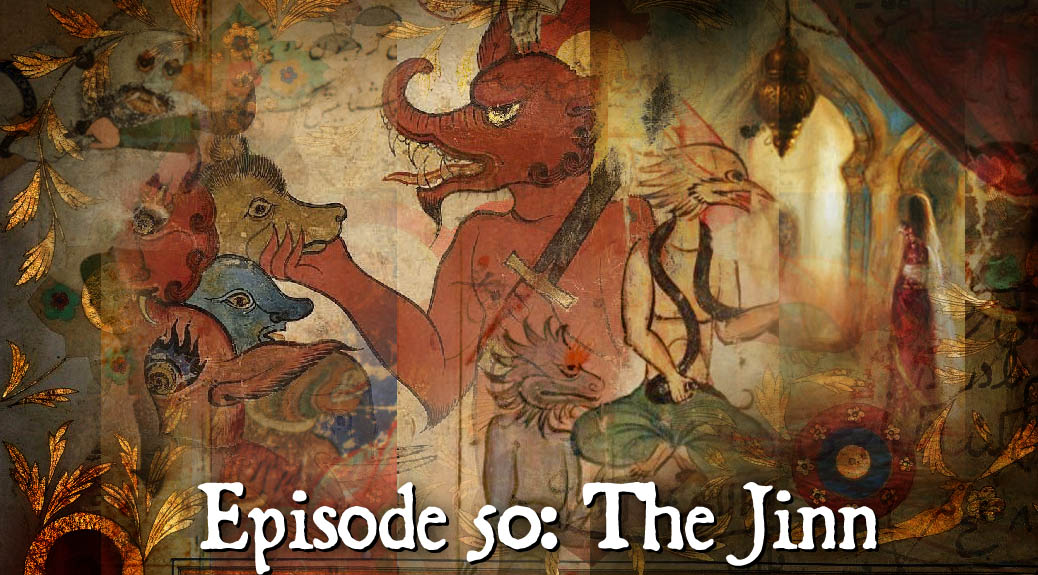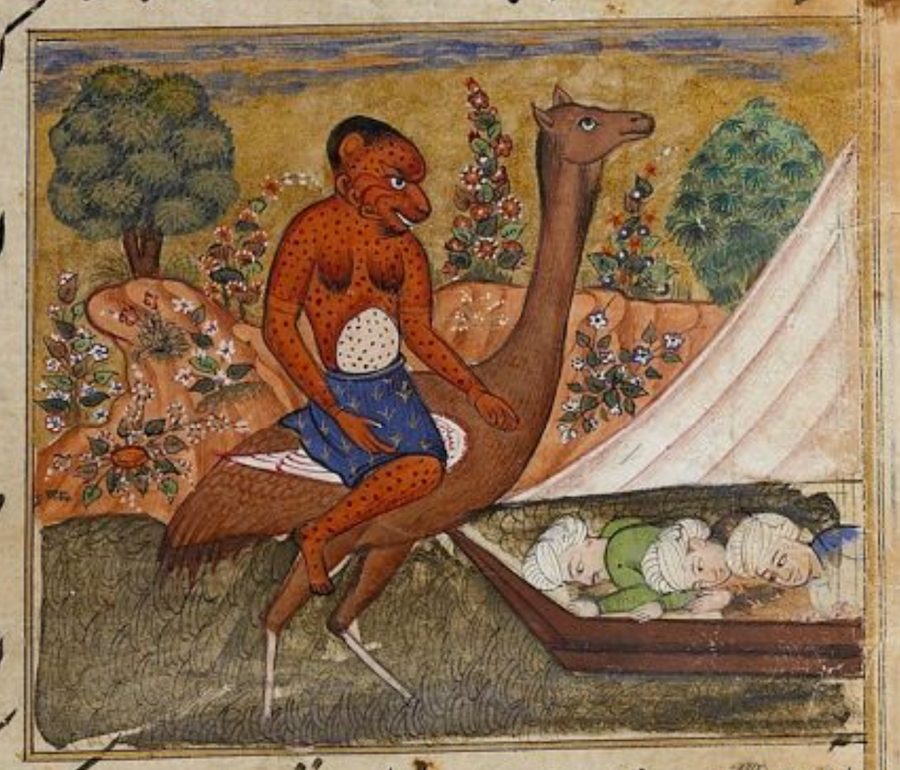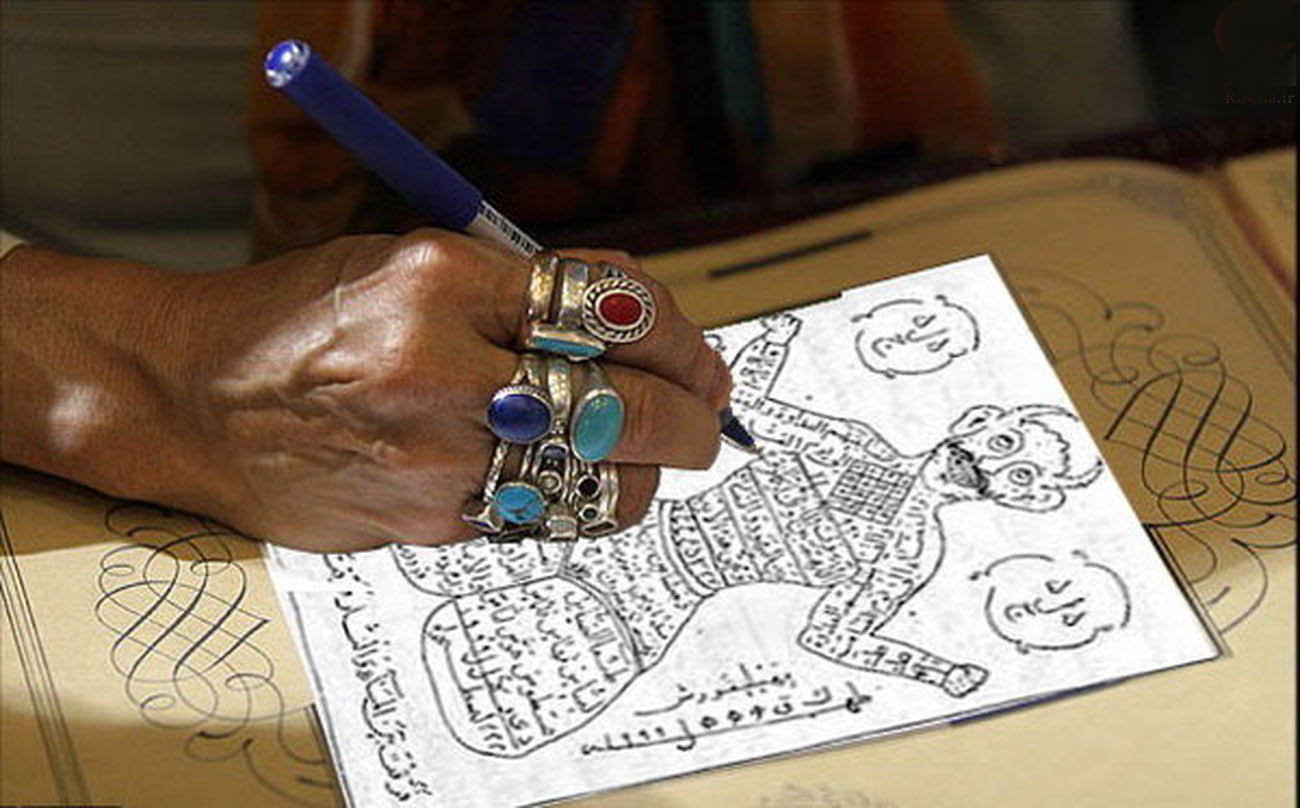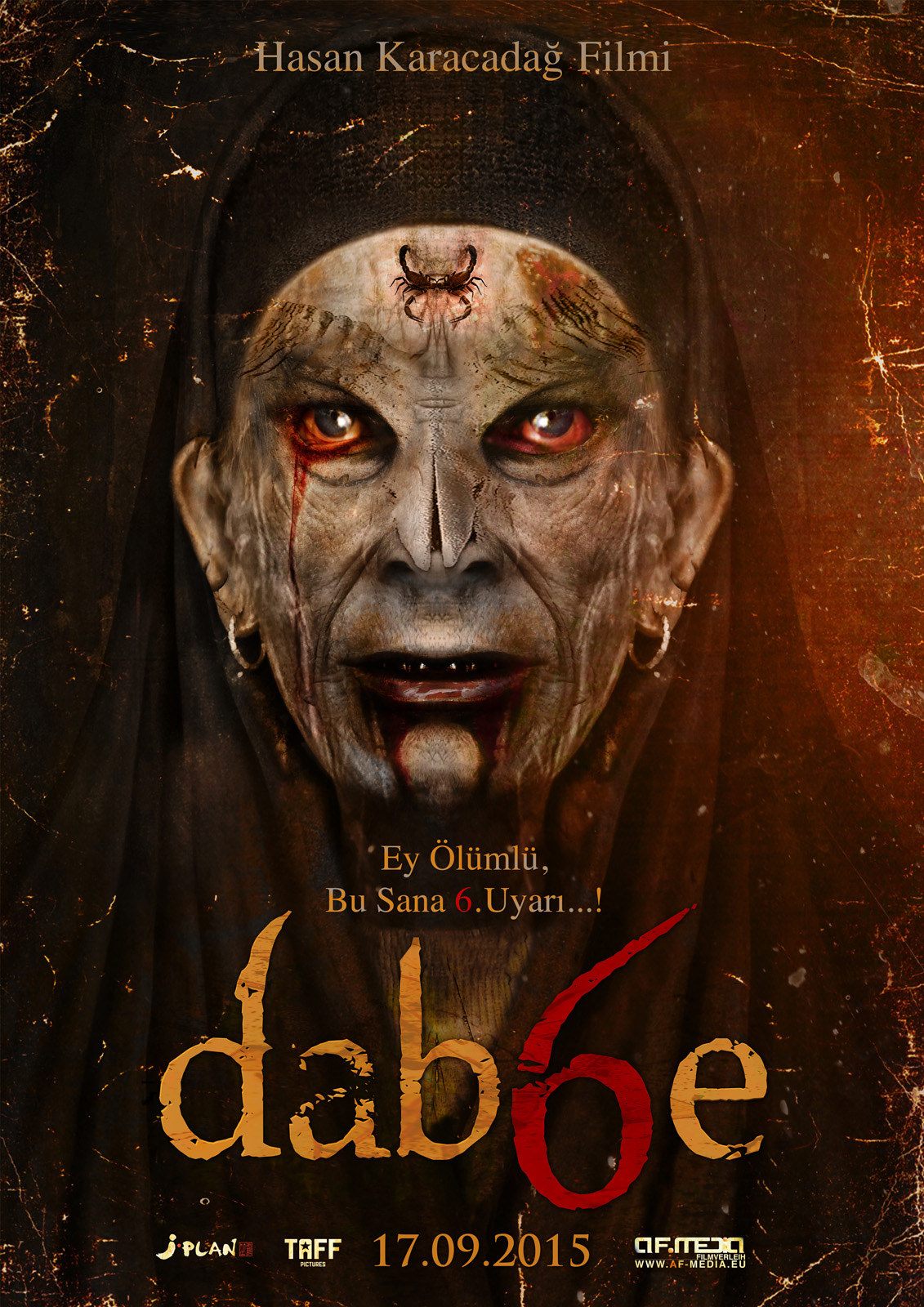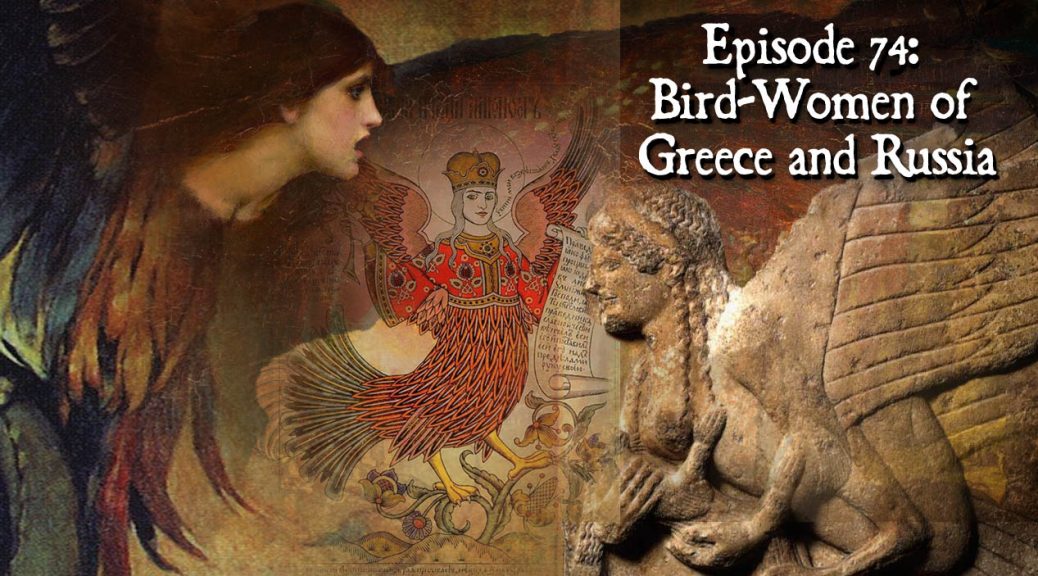
Bird-Women of Greece and Russia
Podcast: Play in new window | Download (Duration: 47:18 — 54.1MB)
Subscribe: Apple Podcasts | Spotify | Android | Podchaser | RSS | More
Bird-women hybrids of Greek legend and Russian folklore are uniquely ambivalent, sometimes bringing death and destruction and at others, prophetic wisdom and the joy of Paradise.
The two Greek species we treat are sirens and harpies, both at times described as having the bodies of birds and faces or upper bodies of human females.
Beginning with harpies — we hear a bit of audio from the 1963 film Jason and the Argonauts, which features a pair of stop-motion harpies created by Ray Harryhausen. While these are more batlike than birdlike, the animator’s tendency to conflate features is actually in line with various classical tales, which tend to disagree sometimes offering winged harpies, others not, and if birdlike, not necessarily featuring the heads of women. We hear some of these descriptions read by Mrs. Karswell.
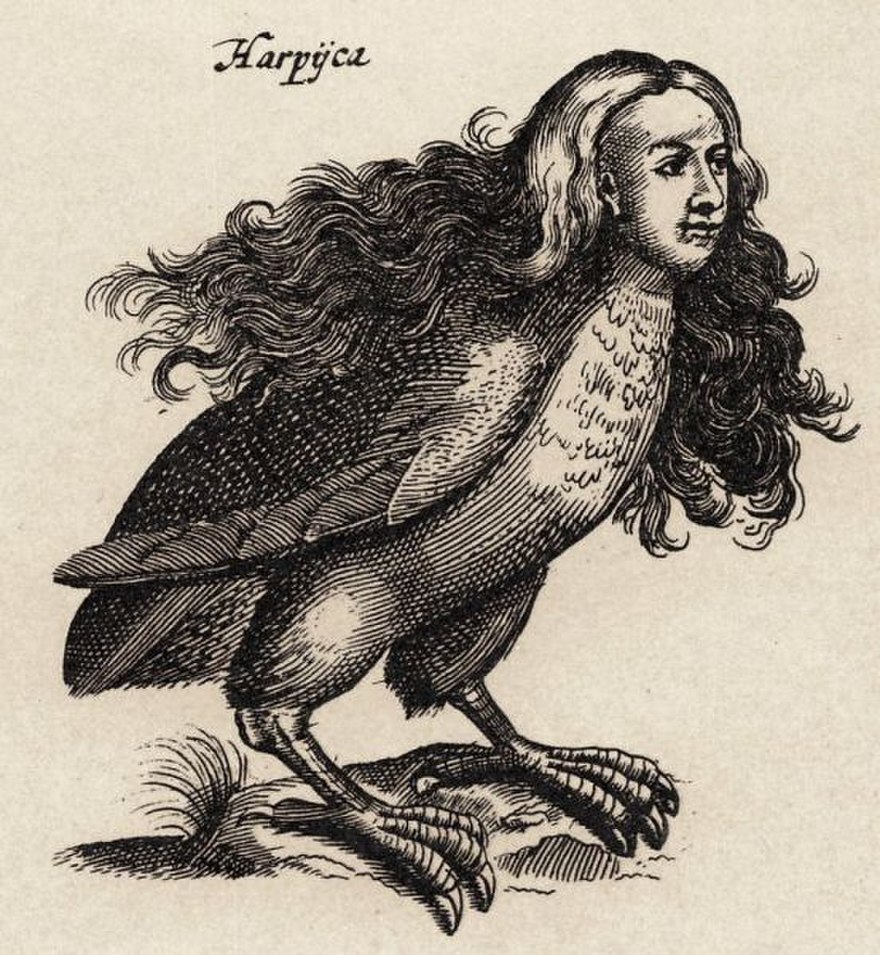
As for sirens, while today they are regarded as equivalent to mermaids, originally they were bird-human hybrids. Thanks to the siren’s connection to the sailors they would seduce, an intuitive shift from bird to fishlike portrayals seems natural, but did not occur until late antiquity or the early medieval period. It seems likely that once this transition occurred the harpy’s image consolidated around the birdlike form no longer associated with the siren. Unlike the creature’s form, the siren’s song, which drew sailors to wreck their ships upon the rocks, has always been a defining attribute of the creature.
There’s something of a disconnect between ancient siren and harpy narratives and the creatures’ representation in visual art, with some of their traits more fixed in the latter than the former. In particular, sirens and harpies, along with other hybrids such as the griffin and sphinx, first appear in Greek culture as decorative embellishments on household items. These monsters, as discussed, were borrowings from cultures of the East, with the human-headed Egyptian ba bird being a likely origin for our avian figures.
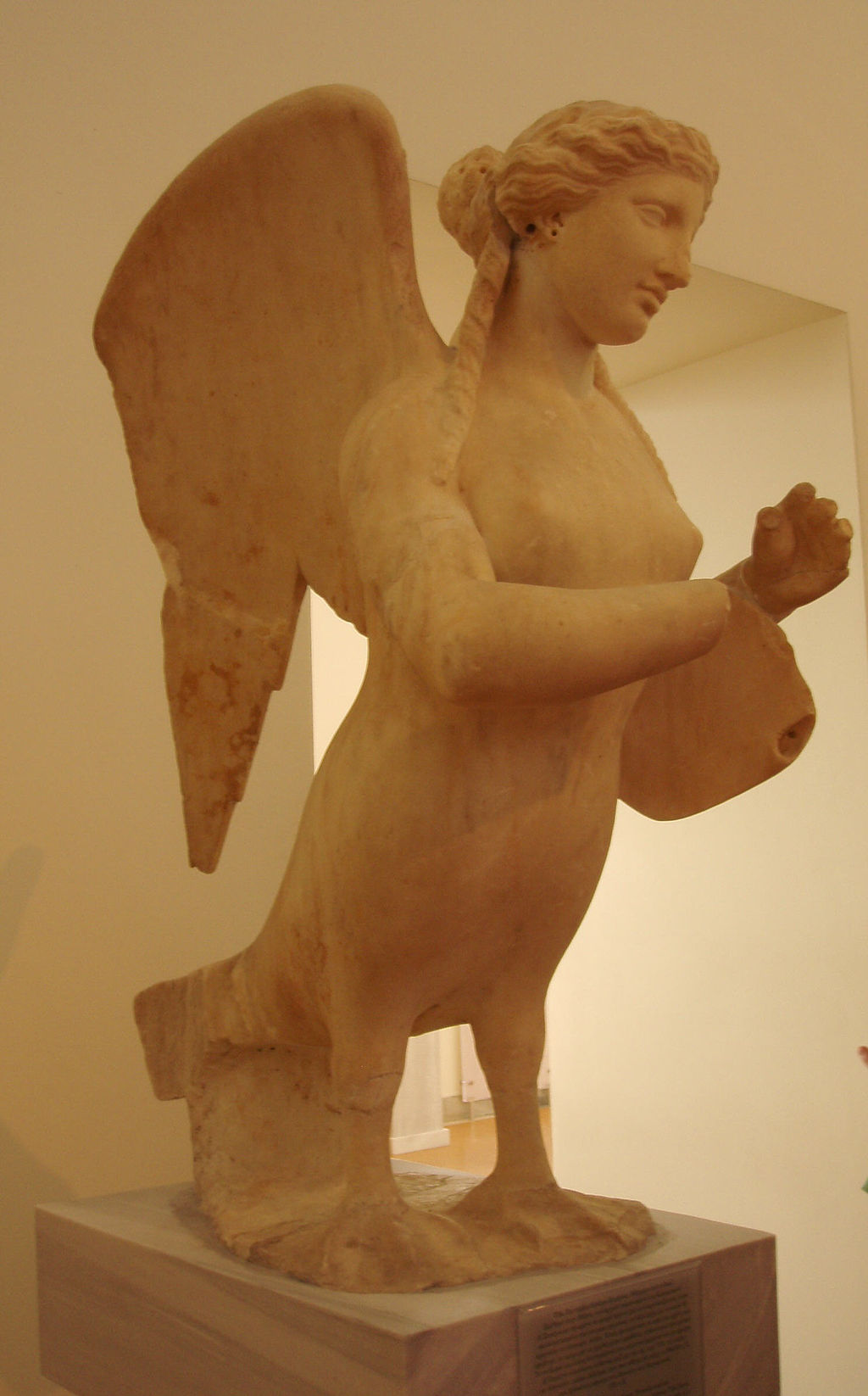
The behavior of these creatures is primarily known from two ancient texts. In the third century BC, the behavior of harpies was defined by Apollonius Rhodius’s in his epic The Argonautica, while the actions of sirens were codified in Homer’s Odyssey from the 8th century BC.
The episode from the Argonautica involves the harpies suddenly descending from the sky to torment a the prophet Phineus, repeatedly sent by Zeus to snatch away his food.
Better known is Homer’s episode describing Odysseus tied to the mast listening to the siren song as his crew sails near, their ears providently plugged with wax. What’s not as often remembered, however, is the nature of the siren’s song, which promises not sexual reward, but omniscience.
The sirens’ offer to share the knowledge of the gods, and the danger inherent in hearing their song finds a precise parallel in narratives about the Russian bird-women we discuss, namely the Alkonost, Sirin, and Gamayun, all of which are said to reside in Paradise, or the realm of the dead. They are portrayed like the harpies and sirens as having the bodies of birds and human heads or heads and breasts but with the addition of crowns or halos.
The Alkonost and Sirin are said to be sisters, inevitably appearing as a complimentary pair in art and folk-tales, with the Alkonost presiding over the daylight hours, and the Sirin the night, the Alkonost bringing joy, the Sirin sorrow, etc. While the Alkonost is generally made the more positive symbol, both birds, through their song, can produce dangerous results. The song of the Alkonost shares a knowledge or experience of the divine that can induce ecstatic madness or a deathlike trance state. The same could be said for the Sirin, though in some instances it’s said to more literally said to abduct mortals into the afterlife.
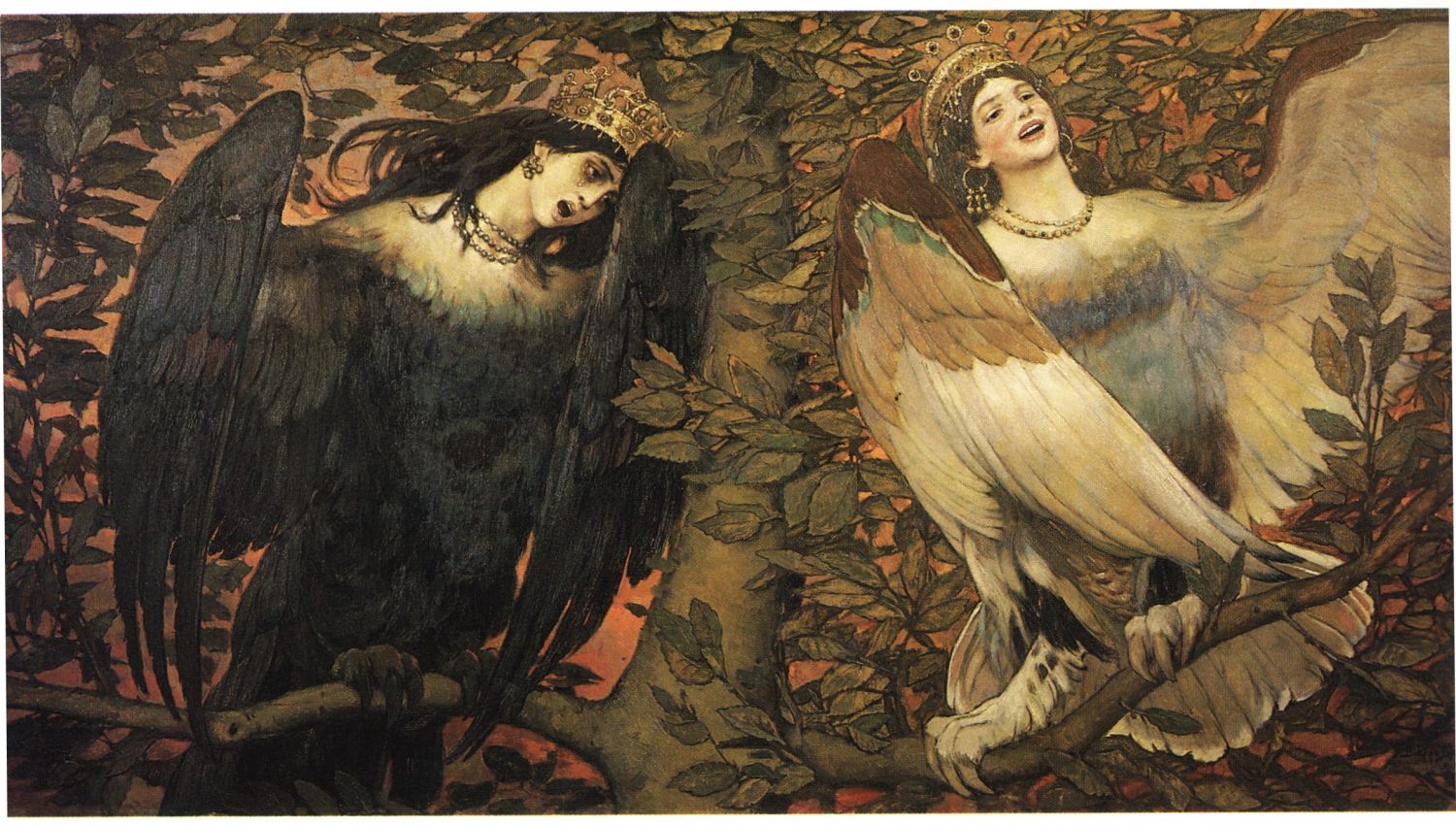
While the Sirin obviously derives its name from the Greek sirens, the Alkonost too has its origins in Greek mythology, specifically in the myth of the lovers Alcyone and Ceyx, the former lending her name (in Russian derivation) to the Alkonost.
For her effrontery of comparing their love to that of the gods, Alcyone (or sometimes both Alcyone and Ceyx) are transformed into birds, specifically kingfishers. As a bird, Alcyone was said by Roman writers to lay her eggs during a five-day period in the winter during which the winds are calmed — a source of our word, “halycon,” meaning a calm or happy interlude.
The Alkonost likewise is said to lay its eggs in the ocean during an interval during which the seas are calm, and is therefore associated with control over the weather. Superstitions found not only in Russia but further afield in Europe associate the kingfisher and dried kingfisher bodies used as charms to predict the weather.
The Sirin and Alkonost were also assimilated into Russia’s Christian culture, sometimes shown perched upon trees in Eden or as representations of the Holy Spirit. We hear of a particularly strange Russian tradition involving the bird-women called “Apple Savior,” involving the blessing of apples, Christ’s transfiguration in the Bible, and the singing of the Sirin and Alkonost, as well as a folktale involving the lovers Kostroma and Kupelo associated with the summer solstice and St. John’s Night.
The song of the Gamayun, like that of the Alkonost and Sirin, is a form of divine language though is less likely to be destructively overpowering and more associated with prophecy and happiness. For this reason, the creature, is also referred to as “The Bird of Happiness” or “The Bird of Prophecy.”
The Gamayun is also often said to have no legs as it is strictly a creature of the air or heavens and never lands. The source of this belief is actually related to a peculiar trade in preserved bird charms, as explained in detail.
The show winds down with some appearances of the Russian bird-women in 19th and 20th-century art, music, and film, including the 1897 opera Sadko by Rimsky-Korsakov, a musical treatment of a folkloric adventurer, merchant, and gusli-player from Novgorod. We hear a bit of the opera’s most famous aria often called “The Song of India” describing the exotic land where the Bird of Happiness may be found.
Our final segment is about Sadko, a 1952 cinematic adaptation of the opera by “the Soviet Walt Disney,” Aleksandr Ptushko, a film repackaged by Roger Corman in 1963 for American screenings as The Magic Voyage of Sinbad.
